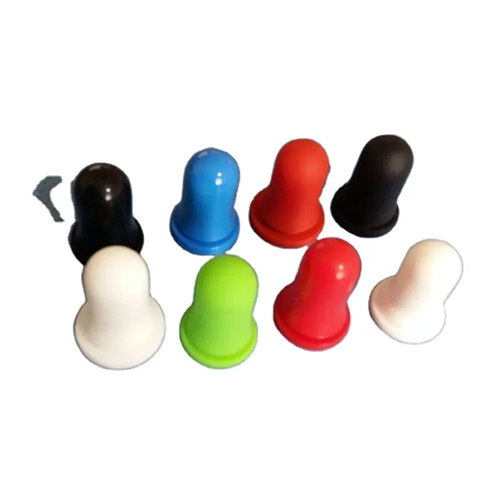Management of nozzle material (runner condensate) at the machine position
Timely cleaning of sprue material at the machine station is fundamental to ensuring continuous injection molding production. Establishing a standardized cleaning process can effectively reduce downtime losses caused by sprue material accumulation. A home appliance injection molding workshop has established a “clean each mold, summarize every hour” management standard: Operators must separate the sprue material from the molded part within 10 seconds after demolding, using specialized shears (with a blade hardness of HRC55) to cut the gate, ensuring that the remaining length does not exceed 0.5mm. Every hour, the collected sprue material is sorted and placed in clearly labeled turnover boxes (marked with material brand, production date, and mold number) for transfer to the crushing area by dedicated personnel. After implementing this process, the amount of sprue material accumulated at the machine station has been reduced from 5kg to 0.5kg per shift, downtime due to sprue material entanglement in the equipment has been reduced by 12 hours per month, and equipment utilization has increased by 3%.

The crushing process for sprue material requires process parameters adjusted according to the material’s characteristics to avoid degradation during the crushing process. For tough materials like ABS, a crusher with a speed of 1500 rpm and an 8mm screen aperture is used to ensure uniform particle size (2-5mm) after crushing. A magnetic separator is also installed at the feed inlet to remove metallic impurities. In the production of a certain laptop computer casing, sprue material accounts for 20%. By controlling the crushing temperature (no more than 60°C) and the number of crushing passes (single crushing), the material’s impact strength is maintained above 22 kJ/m² (compared to 24 kJ/m² for virgin material), allowing 30% of the material to be reused for non-exterior surfaces of the casing. For brittle materials like PC, reducing the crusher speed to 1000 rpm and increasing the blade gap to 0.3 mm reduces dust generation during the crushing process, keeping dust levels below 5 mg/m³ and improving the workshop working environment.

Drying of sprue material is key to ensuring product quality upon recycling, and different materials require specific drying parameters. PA66 sprue material, due to its high hygroscopicity, requires drying at 120°C for 4 hours, with the dew point controlled below -40°C to ensure the moisture content is reduced to below 0.1%. In the production of a certain automotive connector, undried sprue material resulted in silver streaks in the plastic parts, with a defect rate of 15%. By adopting a three-layer tower dryer (preheating zone 80°C, drying zone 120°C, cooling zone 40°C), the molding stability of the recycled sprue material was significantly improved, and the silver streak defect rate was reduced to 0.8%. For POM material, the drying temperature must be controlled between 80-90°C to avoid high temperature-induced material degradation. A drying time of 3 hours can meet the requirements, and the melt flow rate (MFR) variation rate is controlled within ±5% during recycling.

The percentage of sprue material to be reused must be verified and determined through testing. Excessive reuse can lead to decreased product performance. Recycling tests of PP sprue material for a washing machine drum showed that when the reuse ratio did not exceed 25%, the material’s tensile strength (28 MPa) and flexural modulus (1500 MPa) decreased by less than 5% compared to virgin material, meeting performance requirements. However, when the ratio increased to 30%, the impact strength decreased by 12%, making it susceptible to brittle fracture during assembly. Therefore, the workshop established a maximum reuse ratio of 25% for PP sprue material and adopted a “layered addition” method during mixing: after adding virgin material, the sprue material was evenly spread on the bottom of the hopper, where shear mixing by the screw ensured uniform dispersion. This method improved the dispersion of the recycled material by 40%, keeping the color difference ΔE value of the plastic parts within 1.5, meeting appearance requirements.

Long-term storage of sprue materials requires measures to prevent moisture, dust, and aging. For long-term storage (over three months), sprue materials should be sealed and placed in a dry warehouse (relative humidity ≤ 50%, temperature 20±5°C). One engineering plastics warehouse uses tiered storage on shelves, with temperature and humidity sensors installed on each floor. Dehumidifiers automatically activate when the humidity exceeds 60%. Desiccant (5g of silica gel desiccant per kg of sprue material) is placed inside the sprue material packaging and labeled with the storage date, implementing a “first-in, first-out” (FIFO) principle. For aging-prone materials such as PC and PMMA, storage should not exceed six months and should be protected from direct sunlight. UV protection film is installed on warehouse windows to reduce UV intensity to below 5μW/cm². These measures keep the performance degradation of sprue materials stored for six months to less than 3%, far lower than the 15% for unprotected materials, ensuring consistent quality upon reuse.
